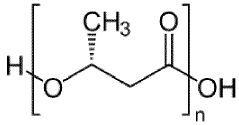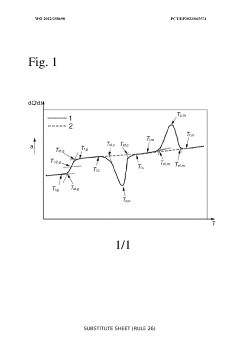Biodegradable Plastics Propel Green Energy Storage Devices
Biodegradable Plastics in Energy Storage: Background and Objectives
Biodegradable plastics have emerged as a promising solution to address the growing environmental concerns associated with conventional plastics. In recent years, there has been a significant shift towards developing sustainable materials for various applications, including energy storage devices. The evolution of biodegradable plastics in energy storage has been driven by the need to reduce the environmental impact of electronic waste and promote circular economy principles.
The field of biodegradable plastics for energy storage devices has witnessed remarkable progress over the past decade. Initially, research focused on developing biodegradable polymers with suitable mechanical properties and degradation rates. As the technology matured, attention shifted towards enhancing the electrical and electrochemical properties of these materials to meet the demanding requirements of energy storage applications.
One of the key drivers behind this technological advancement is the growing awareness of the environmental impact of conventional energy storage devices. Traditional batteries and capacitors often contain toxic materials and are difficult to recycle, leading to significant environmental pollution. Biodegradable plastics offer a sustainable alternative, potentially reducing the ecological footprint of energy storage systems throughout their lifecycle.
The primary objective of research in this field is to develop biodegradable plastics that can effectively replace conventional materials in energy storage devices without compromising performance. This involves optimizing the electrical conductivity, ionic conductivity, and mechanical stability of biodegradable polymers while ensuring their ability to degrade safely in the environment after use.
Another crucial goal is to improve the energy density and power density of biodegradable plastic-based energy storage devices. Researchers are exploring various strategies, such as incorporating conductive fillers, developing novel polymer architectures, and optimizing electrode designs to enhance the overall performance of these eco-friendly energy storage solutions.
Scalability and cost-effectiveness are also essential considerations in the development of biodegradable plastics for energy storage. The aim is to create materials and manufacturing processes that can be easily scaled up for commercial production while remaining economically viable compared to existing technologies.
As the field progresses, there is an increasing focus on integrating biodegradable plastics into various types of energy storage devices, including batteries, supercapacitors, and hybrid systems. This diversification of applications is expected to drive further innovation and expand the potential impact of biodegradable plastics in the energy storage sector.
Market Analysis for Green Energy Storage Solutions
The market for green energy storage solutions has been experiencing significant growth in recent years, driven by the increasing demand for sustainable and environmentally friendly energy technologies. As the world shifts towards renewable energy sources, the need for efficient and eco-friendly energy storage systems has become paramount. Biodegradable plastics for green energy storage devices represent a promising segment within this market, offering potential solutions to address both energy storage and environmental concerns.
The global green energy storage market is projected to expand rapidly, with a compound annual growth rate (CAGR) exceeding 20% over the next five years. This growth is fueled by factors such as government initiatives promoting clean energy, advancements in renewable energy technologies, and increasing awareness of environmental issues among consumers and businesses. The market for biodegradable plastics in energy storage applications is expected to follow a similar trajectory, with a CAGR of around 15% during the forecast period.
Key market drivers for green energy storage solutions include the growing adoption of electric vehicles, the integration of renewable energy sources into power grids, and the need for reliable backup power systems in various industries. Biodegradable plastics offer unique advantages in this context, such as reduced environmental impact, improved recyclability, and potential cost-effectiveness compared to traditional materials.
The market for biodegradable plastics in green energy storage devices is still in its early stages, with significant potential for innovation and growth. Current applications primarily focus on components for batteries, supercapacitors, and other energy storage systems. As research and development in this field progress, new opportunities are expected to emerge, particularly in areas such as flexible and wearable energy storage devices.
Geographically, North America and Europe currently lead the market for green energy storage solutions, including biodegradable plastics applications. However, the Asia-Pacific region is expected to witness the fastest growth in the coming years, driven by rapid industrialization, increasing energy demand, and supportive government policies in countries like China, Japan, and South Korea.
Key market players in the biodegradable plastics for green energy storage devices sector include both established chemical companies and innovative startups. These companies are investing heavily in research and development to improve the performance and cost-effectiveness of biodegradable materials for energy storage applications. Collaborations between material scientists, energy storage experts, and environmental researchers are becoming increasingly common, fostering a multidisciplinary approach to addressing the challenges in this field.
Despite the promising outlook, several challenges need to be addressed to fully realize the potential of biodegradable plastics in green energy storage devices. These include improving the durability and stability of biodegradable materials under various operating conditions, scaling up production processes, and ensuring competitive pricing compared to conventional materials. Overcoming these hurdles will be crucial for widespread market adoption and long-term success in this emerging sector.
Current State and Challenges in Biodegradable Plastics for Energy Storage
The field of biodegradable plastics for green energy storage devices has seen significant advancements in recent years, yet it still faces numerous challenges. Currently, the most widely used biodegradable plastics in this domain include polylactic acid (PLA), polyhydroxyalkanoates (PHAs), and starch-based polymers. These materials have shown promise in various energy storage applications, particularly in the development of biodegradable batteries and supercapacitors.
One of the primary challenges in this field is achieving a balance between biodegradability and performance. While conventional plastics offer excellent mechanical and electrical properties, biodegradable alternatives often struggle to match these characteristics. Researchers are working to enhance the conductivity, stability, and energy density of biodegradable plastics to make them viable for energy storage applications.
Another significant hurdle is the limited lifespan of biodegradable plastics in energy storage devices. The degradation process can compromise the integrity of the device over time, leading to reduced efficiency and potential safety concerns. Developing strategies to control and delay the onset of biodegradation while maintaining the material's eco-friendly properties is a key focus area for researchers.
The cost of production remains a major obstacle in the widespread adoption of biodegradable plastics for energy storage. Current manufacturing processes for these materials are often more expensive than those for conventional plastics, making it challenging to compete in the market. Efforts are underway to optimize production methods and explore new, cost-effective sources of raw materials.
Environmental concerns also pose challenges in the development of biodegradable plastics for energy storage. While these materials are designed to break down naturally, questions remain about their long-term environmental impact and the potential release of harmful byproducts during degradation. Ensuring that the entire lifecycle of these materials is truly sustainable is crucial for their acceptance and implementation.
Standardization and regulatory frameworks present another challenge in the field. The lack of universally accepted standards for biodegradability and performance in energy storage applications makes it difficult for manufacturers to develop and market products consistently. Establishing clear guidelines and certification processes is essential for the growth of this technology.
Despite these challenges, the potential benefits of biodegradable plastics in green energy storage devices continue to drive research and innovation. Advancements in material science, nanotechnology, and biotechnology are opening new avenues for addressing these issues and improving the overall performance of biodegradable plastics in energy storage applications.
Existing Biodegradable Plastic Solutions for Energy Storage Devices
01 Biodegradable plastics for energy storage applications
Development of biodegradable plastics that can be used in energy storage devices, such as batteries or capacitors. These materials aim to combine the benefits of biodegradability with the functionality required for energy storage, potentially reducing environmental impact while maintaining performance.- Biodegradable plastics for energy storage applications: Development of biodegradable plastics that can be used in energy storage devices, such as batteries or capacitors. These materials combine the environmental benefits of biodegradability with the functionality required for energy storage, potentially addressing issues of electronic waste and sustainability in the energy sector.
- Composite materials combining biodegradable plastics and energy storage components: Creation of composite materials that integrate biodegradable plastics with energy storage elements. These composites could be used in applications where both biodegradability and energy storage capabilities are desired, such as in disposable electronics or temporary power sources.
- Biodegradable plastics derived from renewable energy sources: Production of biodegradable plastics using renewable energy sources, creating a more sustainable lifecycle from production to disposal. This approach combines the concepts of biodegradability and renewable energy to minimize environmental impact throughout the material's life cycle.
- Energy recovery from biodegradable plastics: Methods for recovering energy from biodegradable plastics at the end of their lifecycle, such as through anaerobic digestion or controlled combustion. This approach allows for the recapture of energy stored in the plastic's chemical bonds, providing an additional benefit beyond biodegradability.
- Biodegradable plastics with enhanced thermal properties for energy applications: Development of biodegradable plastics with improved thermal properties, making them suitable for use in energy-related applications such as thermal insulation or heat storage. These materials combine biodegradability with specific thermal characteristics beneficial for energy efficiency and storage.
02 Composite materials combining biodegradable plastics and energy storage components
Creation of composite materials that integrate biodegradable plastics with energy storage elements. These composites may incorporate conductive fillers or nanoparticles to enhance energy storage capabilities while maintaining biodegradability.Expand Specific Solutions03 Biodegradable packaging with energy harvesting capabilities
Development of biodegradable plastic packaging that incorporates energy harvesting technologies. These materials could potentially generate or store small amounts of energy from environmental sources while still being environmentally friendly.Expand Specific Solutions04 Biodegradable plastics derived from renewable energy sources
Production of biodegradable plastics using renewable energy sources for their manufacture. This approach aims to reduce the overall carbon footprint of the plastic production process while creating materials that can degrade naturally.Expand Specific Solutions05 Energy-efficient processing of biodegradable plastics
Development of energy-efficient methods for processing biodegradable plastics, including molding, extrusion, and recycling. These techniques aim to reduce the energy consumption associated with the production and recycling of biodegradable plastics.Expand Specific Solutions
Key Players in Biodegradable Plastics and Energy Storage Industries
The research on biodegradable plastics for green energy storage devices is in its early stages, with the market showing significant growth potential. The industry is transitioning from traditional plastics to more sustainable alternatives, driven by environmental concerns and regulatory pressures. Companies like Stratasys, Fujitsu, and Kaneka Corp. are investing in this technology, indicating its growing importance. The market size is expanding rapidly, with increased demand for eco-friendly energy storage solutions. However, the technology is still evolving, with varying levels of maturity among different players. Research institutions such as Fondazione Istituto Italiano di Tecnologia and Industrial Technology Research Institute are contributing to advancements, while companies like Mitsui Chemicals and BioLogiQ are working on commercialization, suggesting a competitive landscape with diverse participants at different stages of development.
Industrial Technology Research Institute
BIOTEC Biologische Naturverpackungen GmbH & Co. KG
Core Innovations in Biodegradable Plastics for Energy Storage
- Development of biodegradable plastic materials based on cellulose esters and carboxylic acid esters, with specific compositions and additives like citric acid esters, polyesters, and iron/manganese compounds, allowing for processing through injection molding and blow molding while ensuring biodegradability and environmental safety.
- A method involving compacting and annealing a homopolymer or copolymer of 3-hydroxy butyric acid to create a PHA powder with enhanced sinterability, characterized by a specific particle size distribution and increased sinterability region, allowing for improved flowability and mechanical properties in additive manufacturing.
Environmental Impact Assessment of Biodegradable Energy Storage Devices
The environmental impact assessment of biodegradable energy storage devices is a critical aspect of evaluating their overall sustainability and potential for widespread adoption. These devices, which incorporate biodegradable plastics, offer promising solutions for reducing the environmental footprint of energy storage systems. However, a comprehensive analysis is necessary to fully understand their ecological implications throughout their lifecycle.
One of the primary environmental benefits of biodegradable energy storage devices is their potential to significantly reduce waste accumulation. Unlike conventional energy storage systems that often contribute to long-lasting electronic waste, biodegradable devices can decompose naturally over time, minimizing their impact on landfills and ecosystems. This characteristic aligns with circular economy principles and supports the transition towards more sustainable energy technologies.
The production phase of biodegradable energy storage devices also presents environmental considerations. The manufacturing processes for biodegradable plastics often require less energy and produce fewer greenhouse gas emissions compared to traditional plastic production. Additionally, many biodegradable plastics are derived from renewable resources, such as plant-based materials, further reducing their environmental impact and dependence on fossil fuels.
However, it is essential to consider the potential drawbacks and challenges associated with these devices. The degradation process of biodegradable plastics may release microplastics or other byproducts into the environment, which could have unforeseen ecological consequences. Furthermore, the specific conditions required for optimal biodegradation may not always be met in real-world scenarios, potentially leading to incomplete decomposition or extended degradation times.
The end-of-life management of biodegradable energy storage devices is another crucial aspect of their environmental impact assessment. While these devices are designed to break down naturally, proper disposal and recycling infrastructure are still necessary to maximize their environmental benefits. Developing efficient collection and processing systems for these devices is essential to ensure that their potential for reducing waste is fully realized.
In terms of resource consumption, biodegradable energy storage devices may offer advantages over traditional systems. The use of renewable, bio-based materials can help conserve non-renewable resources and reduce the overall ecological footprint of energy storage technologies. However, a thorough life cycle assessment is needed to quantify these benefits and compare them to existing alternatives.
The environmental impact of biodegradable energy storage devices extends beyond their physical presence and includes their role in enabling renewable energy adoption. By providing sustainable storage solutions, these devices can support the integration of intermittent renewable energy sources into the grid, potentially leading to broader environmental benefits through reduced reliance on fossil fuels for electricity generation.
Regulatory Framework for Green Energy Storage Technologies
The regulatory framework for green energy storage technologies, particularly those involving biodegradable plastics, is evolving rapidly to address the growing demand for sustainable energy solutions. At the international level, organizations such as the United Nations Environment Programme (UNEP) and the International Renewable Energy Agency (IRENA) have established guidelines and best practices for the development and implementation of green energy storage technologies.
Many countries have implemented specific regulations to promote the use of biodegradable materials in energy storage devices. For instance, the European Union's Waste Electrical and Electronic Equipment (WEEE) Directive and Restriction of Hazardous Substances (RoHS) Directive have been updated to include provisions for biodegradable components in electronic devices, including energy storage systems.
In the United States, the Environmental Protection Agency (EPA) has introduced regulations under the Toxic Substances Control Act (TSCA) to encourage the use of biodegradable materials in various applications, including energy storage. Additionally, the Department of Energy (DOE) has established funding programs and research initiatives to support the development of green energy storage technologies.
Several countries have implemented tax incentives and subsidies to promote the adoption of biodegradable plastics in energy storage devices. For example, Japan's Ministry of Economy, Trade, and Industry (METI) has introduced a subsidy program for companies developing and manufacturing biodegradable energy storage components.
Standardization bodies, such as the International Organization for Standardization (ISO) and the American Society for Testing and Materials (ASTM), have developed specific standards for biodegradable plastics used in energy storage applications. These standards ensure consistency in material quality, performance, and environmental impact across different manufacturers and regions.
Regulatory agencies are also focusing on the end-of-life management of green energy storage devices. Many countries have implemented extended producer responsibility (EPR) programs, requiring manufacturers to take responsibility for the collection and recycling of their products. This approach encourages the use of biodegradable materials to simplify the recycling process and reduce environmental impact.
As research on biodegradable plastics for green energy storage devices progresses, regulatory frameworks are expected to become more comprehensive and stringent. Future regulations may include mandatory biodegradability requirements for certain components, stricter lifecycle assessment criteria, and more detailed labeling and certification processes for green energy storage technologies.




